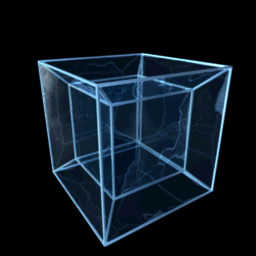Can you imagine that? (I)

How may different orthants are there in R 1 0 ?
Clarification : An orthant the analogue in n -dimensional Euclidean space of a quadrant in the plane or an octant in three dimensions.
The answer is 1024.
This section requires Javascript.
You are seeing this because something didn't load right. We suggest you, (a) try
refreshing the page, (b) enabling javascript if it is disabled on your browser and,
finally, (c)
loading the
non-javascript version of this page
. We're sorry about the hassle.
3 solutions
I guess you can't really call them "quadrants" then ;) In 3-D they are called octants
Log in to reply
Thank you sir..! Is there any general name for quadrant or octant or so, please?
Log in to reply
Yes the general term is orthant or hyperoctant . Most mathematicians prefer hyperoctant, I suppose, since the usage of "hyper-" in this context follows a pattern of taking a 3-D term and generalizing it to n-space, as in hyperplane or hypersphere.
Log in to reply
@Otto Bretscher – Thanks again..! I have edited the question..
Log in to reply
@Zeeshan Ali – I was not really serious about my remark. It just sounds funny to have 1024 quadrants of something ;)
Log in to reply
@Otto Bretscher – Well... of course ..!
@Otto Bretscher – It is all about "Fun..!" on brilliant.org :)
In accordance to Bosonic string theory, there exist 2 6 dimensions of space time. Does it conclude that there exist 2 2 6 orthants in space time?
@Michael Mendrin @Otto Bretscher
Log in to reply
Well... I think .. Yes! :)
Log in to reply
@Zeeshan Ali – I am in doubt because of considering time as a dimension.
No! We are talking about a 26 dimensional manifold here, not 26 dimensional Euclidean space. In the context of a manifold, the notion of orthants does not make sense. (Does a torus have four quadrants?)
Aren't the 26 dimension actually not of space-time? Meaning that there are 3 dimensions of space, and one temporal dimension (in terms of the math). So the rest of the 22 are more so hyperspace I think...
You can distill the solution down to the basics. We know that a quadrant, octant, etc... Can be defined as a permutation of the values +or - assigned to the number of dimensions n in R n . Therefore, there exist 2 n orthants in R n .
I think you should change the link to wikipedia because the answer is there
Well... right ! Thank you very much ..
In R 2 , there are 2 2 = 4 different quadrants .
In R 3 , there are 2 3 = 8 different octants .
In R 4 , there are 2 4 = 1 6 different orthants.
.
.
.
In R 1 0 , there are 2 1 0 = 1 0 2 4 different orthants.
Generalization:
Let R n be the n − d i m e n s i o n a l space. Then there are 2 n different orthants .